As a charter boat captain, I frequently anchor in 300-plus feet of water. Having the proper anchor setup saves time and frustration on the water. If the anchor does not hold or slides when setting the anchor it results in extra work and lost fishing time. Fishing boat anchors hold the boat over the best fishing spots. For sailboats and boats that stay on anchor overnight, anchors are a critical piece of safety equipment.
Boat anchors are a must-have piece of equipment on all boats. Anchor setups do not have to be complicated or expensive but do have to be sized appropriately. The length of rope, length of chain, and size of anchor all must be taken into account for the anchor to properly hold the boat in place. Anchor retrieval methods and anchor storage locations are also important things to think about when buying a boat anchor.
I have hand-pulled many anchors but for anchors set deeper than 50 feet having an anchor retrieval system is certainly preferred. An electric winch called a windlass is the easiest way to retrieve an anchor. An anchor buoy with an anchor ball ring also works well and will be discussed in this article.
Depending on the size of the boat, the bottom structure, and the depth of water will determine the best actor for the situation. Here are some of the most common boat anchor types.
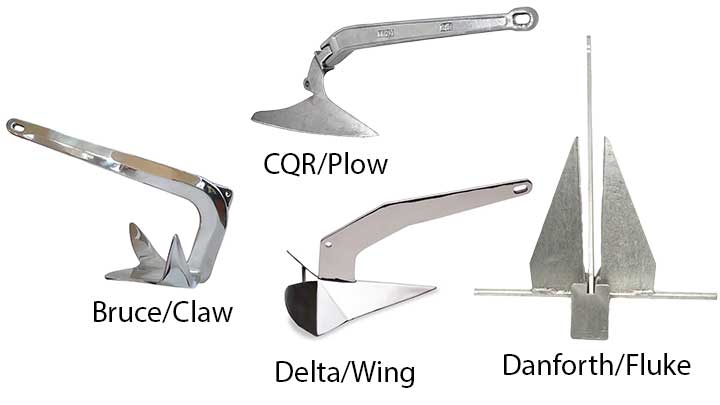
The anchors above are the most common boat anchors. These anchors have two names because at one point were protected with patents and trademarks. These have expired and some manufacturers use the original names and others use the common anchor names. Because these anchors can be built by multiple manufacturers the cost is much lower than newer patented anchors. This article will cover both the traditional anchor designs and the latest patented anchor designs.
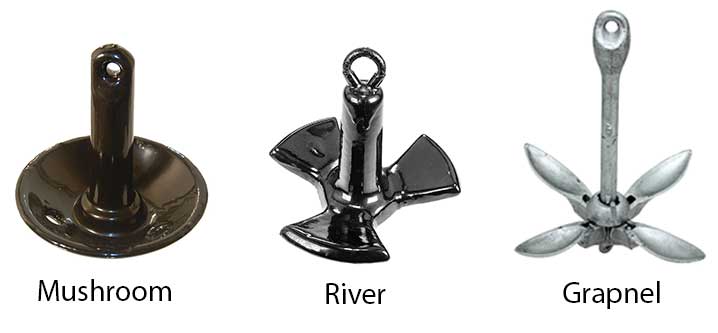
For small boats like kayaks, canoes, and paddle boards small anchors that weigh 1.5 pounds to 8 pounds can be used. The best anchor type will depend on the bottom structure and the amount of holding power needed. It is also common to use lightweight claw or fluke anchors on small boats. These small anchors can be stored with anchor rope and chain in a bag or small bin.
The 15 best boat anchors will be discussed in detail. Most anchors come in galvanized steel and stainless steel. Stainless steel costs way more and the advantages are mostly cosmetic. Stainless steel looks awesome and is less susceptible to rust. For small anchors, the price difference is not that much but for large anchors, stainless steel gets really expensive. Anchors can also be made of aluminum which does not corrode easily but is too lightweight. I would not recommend getting an aluminum anchor.
Here Are the Best Boat Anchors
1. Bruce or Claw Boat Anchor
A Bruce anchor is commonly called a claw anchor. This is my favorite type of anchor and is one of the most popular anchors for fishing boats and recreational boats. I have used this anchor to keep 40-foot dive boats in place on sandy bottoms in the Florida keys. If the anchor was placed in loose sand near a beach the anchor would slide and not set occasionally. If there was some grass or structure to the bottom the anchor would catch and hold well. This is also the anchor I used in Alaska last season to anchor in around 400 feet of water to fish for halibut. I did not have any problems with the anchor sliding while setting or coming loose once on anchor.
Bruce or Claw Anchor Galvanized Steel
Price Range: $35-$230
This is a galvanized steel claw boat anchor that comes in sizes from 4.4 pounds to 44 pounds. The 32-foot boat I was driving in Alaska had a 22-pound anchor. The anchor was rigged with 75 feet of anchor chain attached to 600 feet of 5/8 inch anchor rope. This worked to anchor in 400 feet of water on high seas and strong currents.
There are two main reasons I like this anchor. First, it holds well in most bottoms that I have used it in. This includes sand, gravel, dirt, mud, and rocky bottoms. Because it does not have a sharp point it could struggle on hard bottoms like hard dirt or hard clay. Some third-party tests show that other anchors have more holding power. These tests are very dependent on the type of bottom. The test basically showed the claw anchor not holding well likely due to not digging into the hard bottom at the testing location. Luckily most lake and ocean bottoms are soft and suitable for the claw anchor.
The second reason I like the claw anchor is that it can easily be rigged with a breakaways system for situations where the anchor gets stuck on the bottom. The easy anchor pull video below shows how this works. The anchor chain is tied to the front of the anchor with several wraps of thin rope or zip ties. If the anchor is stuck a large force will break the thin rope at the front of the anchor. The anchor chain then pulls from the back of the anchor which frees the anchor from being stuck. In hard rocky bottoms, it is common for the line tied to the front to break during the anchor retrieval.
For average anchoring conditions, I would recommend getting a 6-pound anchor for boats under 16 feet, an 11-pound anchor for boats 17 feet – 22 feet, a 16.5-pound anchor for boats from 23-25 feet, a 22-pound anchor for boats 26-32 feet and a 33-pound anchor for boats 33-40 feet. The best size will vary based on the boat weight and intended anchoring conditions.
Bruce or Claw Anchor Stainless Steel
Price Range: $99 – $2,300
The stainless steel claw anchor comes in all the same sizes as the galvanized steel version and four larger sizes. The large sizes are 55 pounds, 66 pounds, 110 pounds, and 176 pounds.
In the video below I show how to retrieve an anchor using an anchor ball ring. Also how to rig a claw anchor with a breakaways system is shown. This allows the anchor to be retrieved even when it is stuck.
2. Danforth or Fluke Boat Anchor
Fluke anchors are the most popular anchors for boats under 20 feet in length. This is a low-cost anchor option commonly used on boats that only anchor occasionally. Fluke anchors can lay flat which makes storage of this anchor easier than most other anchor types. This style of anchor can be stored on bow rollers but is often more difficult with fluke anchors compared to other anchor styles.
This anchor as a large surface area and can drift and get the chain twisted if the descent rate is to fast. When on the seafloor the anchor does not roll right side up like most anchors but rather flips down into the ground regardless of which side it lands on. Fluke anchors work best in soft bottoms and sand. When anchoring in rocks anchors can get stuck and the fluke anchor frequently gets bent during the retrieval process. Most of the time the anchor can get bent back to a usable condition.
The chain on fluke anchors can be set to have a breakaway connection at the front of the anchor and a permanent connection at the back. Most fluke anchors do not use a breakaway connection as the chain may get in the way of the fluke movement. If a breakaway setup is used the chain should be pulled tight along the main arm.
Danforth or Fluke Anchor Galvanized Steel
Price Range: $22- $70
This Seachoice fluke anchor comes in three sizes 4 pounds, 8 pounds, and 13 pounds. The 4-pound anchor works under typical anchoring conditions for boats under 15 feet. The 8-pound works for boats between 16 and 20 feet. The 13-pound anchor work for boats between 21-25 feet. I would not recommend using the standard low-cost cheap fluke anchors on boats over 25 feet. I have seen thick custom-built fluke anchors that were used on 50-plus foot commercial vessels. Bass Pros Shops has a similar fluke anchor.
Fluke anchors are an attractive option mostly because of their cost and availability. Properly setting up an anchor takes time and effort and you usually get what you pay for. Personally, I would look at other anchor options if you are trying to get an anchor system that will last. Fluke anchors have their place and work alright which is why they are widely used. If they get bent or stuck on the bottom, replacing the anchor does not break the bank. The process of getting a new anchor does continue though.
Fluke Stern Anchor with Rope and Chain
Price Range: $90
This 7-pound fluke anchor comes rigged with 50 feet of rope and anchor chain. In shallow water for boats under 15 feet in length, this anchor should work well. This anchor setup is widely used as a stern anchor. A stern anchor is tied to the back cleat of the boat to keep the boat from swaying back and forth. Bass Pro Shops has a similar 8-pound fluke anchor kit with chain and rope.
Stern anchors are typically used when parked next to other boats near the shore. The back of the boat faces the shore and the anchor is set in very shallow water. The bow anchor line and the stern anchor lines are pulled tight to prevent the boat from swaying. Setting the boat is shallow water can allow people to walk to shore without having to jump in and swim.
If you like boats as much as I do you enjoy walking around harbors and marinas checking out all the boats. In the youtube video below I walked around two marinas in Sitka Alaska and check out the different boat anchor types. Boat anchors on small skiffs, sailboats, charter boats, and even large commercial vessels were discussed. Hopefully seeing the different anchor styles and sizes will help when getting a new boat anchor.
3. Delta or Wing Boat Anchor
The delta for wing anchor is commonly used by large boats over 20 feet in length and on sailboats. The third-party test cited earlier showed the delta anchor held above the max level of the test under certain conditions. This anchor holds well on all bottom types except rocky bottoms.
The delta anchor is better at holding in hard clay and hard mud than the claw anchor. Testing has shown that the delta anchor held significantly less weight with a 3 to 1 ratio of depth to scope compared to a 5 to 1 scope ratio. That seems like a major drawback when anchoring deep. This could likely be overcome by increasing the length of the anchor chain.
Delta Anchor Galvanized Steel
Price Range: $160 – $580
The delta anchor comes in sizes of 9 pounds, 14 pounds, 22 pounds, and 35 pounds. This is an excellent anchor option when the anchor can be stored on bow rollers. Otherwise, this anchor is an awkward shape and difficult to store. This is a mid-cost anchor that is sturdy and has high holding power. This is likely why this is such a widely used anchor type.
Delta or Wing Anchor Stainless Steel
Price Range: $270 – $1,550
The stainless steel version of the delta anchor comes in sizes of 13 pounds, 22 pounds, 33 pounds, 44 pounds, 55 pounds, 66 pounds, and 110 pounds. Anchors can last many years and having a stainless steel anchor with less rust could be worth the extra money.
4. CQR or Plow Boat Anchor
The CQR is a plow anchor similar to the delta anchor. The big difference is the CQR has a hinge connecting the arm and scoop of the anchor. This hinge helps prevent the anchor from getting dislodged in changing winds and tides. These anchors are typically very heavy and are a good option only when they can be stored in front bow rollers.
CQR or Plow Anchor Galvanized Steel
Price Range: $175 – $485
The norestar galvanized steel CQR anchor comes in sizes of 26 pounds, 35 pounds, 48 pounds, and 59 pounds. This is a popular anchor style for sailboats. The third-party study showed that it did not do well in the hard seabed of the testing area. This is a popular tried and true anchor that does work well in most seabeds.
CQR or Plow Anchor Stainless Steel
Price Range: $352 – $900
The norestar stainless steel CQR comes in sizes of 26 pounds, 35 pounds, 48.5 pounds, and 59.5 pounds. This is very similar to the galvanized steel version. The anchor chain can be permanently mounted in the back with breakaway ties securing the anchor chain in the front. This would pull the anchor from the back in the event the anchor was stuck and the front breakaway lines broke free. The front chain can be connected around the front loop with rope or zip ties. Most CQR anchors I have seen being used do not implement the breakaway setup and connect the chain directly to the front loop.
5. Box Anchor
Price Range: $150- $ 220
The box anchor comes in four sizes, baby, small, large, and extra-large. The anchor comes in galvanized steel or stainless steel. Bass Pros Shops has a similar folding box anchor.
This anchor is a unique design and many people recommend getting this anchor. My friend has this anchor and said his pontoon boat did not budge in like 70 miles per hour wind. This is an exaggeration I am sure but he does love this anchor.
This anchor has two big advantages over conventional anchors. First, it does not require a chain. Not having an anchor chain means the overall anchor setup should be lighter and easier to retrieve. Second, only a 2-to-1 scope is needed. The scope is the ratio of anchoring depth to anchor line set out. This low scope value means less rope is needed for the anchor setup.
Pontoon boats and lake boats typically do have bow rollers which are convenient to hold a conventional anchor. When bow rollers are not on a boat the box anchor is a great choice. Not having to store a large amount of rope and an anchor chain on the deck of the boat is nice. The anchor also folds to lay flat which is convenient for storing the anchor.
The box anchor can not land upside down because both sides have cleats that dig into the ground. For people, that hand pull their anchor this is also a good option. Once the boat is vertical with the anchor this is not much holding the anchor into the ground and should come off the bottom easily.
The baby box anchor is 7 X 18 inches and weighs 14 pounds. It can hold jet skis and small boats under 16 feet. The small box anchor is 8.5 X 22 inches and weighs 21 pounds. It can hold boats ranging from 18 to 30 feet. The large box anchor is 25 X 9.5 inches and weighs 26 pounds. It can hold boats up to 40 feet. The extra-large box anchor is 30 X 11 inches and weighs 40 pounds. It can hold large and heavy boats greater than 32 feet.
The disadvantage of a box anchor is that it does not work well with an anchor ball ring or windlass. This means the box anchor will always have to be retrieved by hand.
6. Rocna Boat Anchors
Rocna boat anchors are a new style of plow anchors launched in 2004. The design was made by New Zealand sailor Peter Smith. They have a self-righting roll bar. The sharp point helps this anchor be fast setting and have high holding power.
Rocna Anchor Galvanized Steel
Price Range: $216 – $ 10,815
The galvanized steel Rocna anchor comes in sizes of 9 pounds, 13 pounds, 22 pounds, 33 pounds, 55 pounds, 73 pounds, and 606 pounds. One-third of the anchor’s weight is on the fluke tip which comes to a sharp chisel-like point. This ensures a solid fast set even in hard seabeds.
The Rocna Fisherman anchor is similar to the Rocna but has a shackle rail that helps when recovering a stuck anchor. The chain on the Rocna could be permanently attached near the back of the anchor with a breakaway on the front. This would also help when the anchor is stuck.
Rocna Anchor Stainless Steel
Price Range: $1,244 – $ 12,437
The stainless steel Rocna anchor comes in sizes of 13 pounds, 22 pounds, 33 pounds, 55 pounds, 88 pounds, and 121 pounds.
7. Vulcan Boat Anchor
The Vulcan boat anchor is made by the Rocna anchor company. This new design offers the high holding power fast setting performance of the Rocna but without the roll-bar. This allows the anchor to fit better on many bowrollers. This anchor does work well with windlass anchor systems. I do not think the anchor would easily slide onto an anchor ball ring so I would not recommend using it with an anchor buoy. If you are spending this much money on an anchor you can likely afford a windlass on the boat and this would not be a problem.
Vulcan Anchor Galvanized Steel
Price Range: $160 – $1,9230
The galvanized steel Vulcan comes in sizes of 9 pounds, 13 pounds, 20 pounds, 27 pounds, 44 pounds, 55 pounds, 88 pounds, and 121 pounds. This anchor does have a location at the back for the anchor for the chain to be permanently attached. This makes it so the anchor can be rigged with a breakaway setup.
Vulcan Anchor Stainless Steel
Price Range: $500 – $3,300
The stainless steel Vulcan comes in sizes of 9 pounds, 13 pounds, 20 pounds, 27 pounds, 44 pounds, and 73 pounds. The anchor is identical to the galvanizes steel version but is made with stainless steel.
8. Mantus Anchor
The Mantus anchor is another new style of plow anchor. The anchor is built from steel plates with no cast parts. The anchor has a large roll bar which makes the anchor self-righting even in the softest seabeds. According to the company, this anchor sets faster and deeper than all other anchors tested. This anchor can also be broken down so that extra anchors can be stored onboard. Mantus anchors also offer an M2 version that does not have the roll bar which allows the anchor to be more easily stored on some bow-rollers.
Mantus Anchor Galvanized Steel
Price Range: $175 – $2,700
The galvanized steel Mantus anchor comes in sizes of 8 pounds, 13 pounds, 17 pounds, 25 pounds, 35 pounds, 55 pounds, 65 pounds, 85 pounds, 101 pounds, 125 pounds, 155 pounds, and 175 pounds. This is a high-end anchor style that is set at a moderate price.
Mantus Anchor Stainless Steel
Price Range: $500 – $6,200
The stainless steel Mantus anchor comes in sizes of 2 pounds, 17 pounds, 35 pounds, 55 pounds, 155 pounds, and 175 pounds. This anchor is significantly more expensive than its galvanizes steel counterpart.
9. Spade Boat Anchor
Price Range: $375 – $6,170
The spade boat anchor comes in galvanized steel, stainless steel, and aluminum. Anchor sizes are given in both weight and surface area. For example, the S40 is 400 square centimeters. According to the company, the anchor will have the same holding power based on the area of the anchor regardless of the material it is made out of. This is probably generally true but a heavier anchor will likely set better in hard seabeds.
The spade company is based in Palm Bay Florida. The spade anchor was the first concave single fluke design and the company started selling this anchor in 1990. The anchor has 50 percent of its weight at the tip of the anchor. This is good for digging into hard seabeds and this anchor is known for working well in grass, mud, and sand.
The galvanized steel spade anchor sizes are 12 pounds, 21 pounds, 33 pounds, 44 pounds, 55 pounds, 66 pounds, 77 pounds, 99 pounds, 121 pounds, 165 pounds, and 243 pounds. The stainless steel spade anchor weights are the same as the galvanized steel anchors.
The aluminum spade anchors sizes are 6 pounds, 10 pounds, 15 pounds, 26 pounds, 41 pounds, and 57 pounds. The aluminum anchor would be a good option when hand pulling the anchor and using it in soft seabeds.
10. Mushroom Anchor
Price Range: $25-$50
The mushroom anchor comes in sizes of 8 pounds, 10 pounds, 15 pounds, and 20 pounds. The anchor is made of PVC-coated steel. This anchor is great for kayaks, canoes, paddle boards, inflatable boats, and small Jon boats. These are great for anchoring in thick weeds or muddy bottoms where it can be quickly set and retrieved. Also, these bottoms allow the anchor more gripping power. This anchor does not permanently hold the boat in one location and should not be used for safety-critical situations.
An anchor chain is not typically used with a mushroom anchor. An oversized clip similar to a carabiner is placed through the top loop of the anchor which is connected to the anchor rope. A minimal scope is set out with this style anchor. The anchor has holes in the bottom which allow mud and sand to fill the anchor. After retrieval, any mud or sand remaining on the anchor should be shaken off before bringing it onboard the vessel.
There are also mushroom anchors with long shafts that get buried into hard ground to create permanent mournings.
11. River Anchor
Estimated Price: $24-$70
This river anchor is an 8-pound PVC coated steel anchor. The anchor does not have high holding power but will stop the boat from drifting in light winds and light currents. This anchor is good for kayaks, canoes, paddle boards, small boats, pontoon boats, and even bass boats. The anchor deploys quickly and retrieves quickly.
An oversized clip on the anchor rope attaches to the top loop of the anchor. An anchor chain is not needed. The ears on the river anchor allow mud and sand to fill over the top of the anchor. Mud and sand come off easier with the river anchor compared to the mushroom anchor. When fishing these anchors are typically set into the water quietly to not spook fish in the area. A minimal scope is set out on this style anchor which makes anchor retrieval fast and easy.
12. Grapnel Anchor
Price Range: $21 – $55
The grapnel anchor comes in sizes of 1.5 pounds, 3.5 pounds, and 5.5 pounds. This is likely the best anchor option for kayaks, canoes, paddle boards, and inflatable boats. This small anchor setup is perfect when space is limited as the anchor and rope is easily stored in a storage bag.
Finishes for the anchor include painted galvanized steel and stainless steel. Included with the anchor is a 25-foot hollow polythene anchor line attached to a marker buoy and steel snap hook. The entire anchor setup comes in a reusable nylon storage bag. Some of these setups are rigged with an anchor chain and some have the anchor rope directly tied to the anchor. The anchor chain will increase the holding capabilities of the anchor but the setup will be heavier.
13. Sand in a Bag Anchor
SandSak portable sand anchor is a dry bag that also works as an anchor when it is filled with sand. This is a clever way to make an anchor for kayaks, surfboards, paddle boards, inflatable boats, and jet skies. The anchor comes with a 12-foot-long braided floating rope with a buoy and steel clip. This bag holds approximately 50 pounds of sand. There is a handle on the bottom of the bag so the sand can easily be dumped out.
The top of the bag has plastic clips and rings that hold the metal clip which is attached to the anchor line. This works great for a beach bag and then doubles for an anchor. This is not intended to be a strong boat anchor but certainly can be practical. Attach this anchor to innertubes or paddle boards in shallow water and simply float and relax without drifting away. This bag full of sand could also be placed on the shore to act as a stern anchor for small boats. Wearing an inflatable life jacket is also popular when using stand-up paddle boards and small vessels.
14. Sandshark Anchor Spike
The SandShark 18-inch sand anchor is an auger that digs into the ground. Once the auger is secured deep in the ground the anchor line attaches to the top loop. This anchor is great for securing boats in very shallow water or to the shore. This can also be used as a lightweight stern anchor to prevent the boat from swaying. The augur comes with a padded case for easy storage.
15. Pole Spike Mud Anchor
Pole Spike mud anchors are made of fiberglass. The length of the stick is 6 feet long with a t-handle. This works to anchor, canoes, kayaks, and small boats up to 16 feet in length. The pole can also be used as a push pole in shallow water. It does sink in the water so it is recommended to add a float so the anchor does not sink if it is dropped in the water.
16. Sea Anchor
Canyon Fishing Sea Anchors come in sizes of 18-inches, 24-inches, 36 inches, and 48 inches. Sea anchors are used to help slow the drift rate down of a boat and orientate the boat in a favorable direction. A sea anchor is also called a drift sock or parachute. Sea anchors are commonly used when sailfish fishing, live bait fishing, and chunking for tuna. Anytime you do not want the wind to drift the boat as fast putting out a sea anchor is a simple and effective way to do this. They can also be used on kyacks to slow the drift rate and not have to paddle upwind as often to stay on a specific fishing location.
Secure the anchor rope to a strong cleat as lots of force is applied by the sea anchor. There should be a trip line secured to the back of large sea anchors to make the retrieval process easier. When the sea anchor is pulled from the back there is much less resistance.
17. JL Marine Power Pole Pro Anchor
Estimated Price: $1,700
JL Marine Power-Pole anchors come in 4-foot, 6-foot, and 8-foot anchor depth sizes. Color options include a white or black powder-coated finish. This anchor system weighs about 26.3 pounds. The Everflex spike comes with a lifetime warranty. Apps can be downloaded to control the anchor settings from your phone.
Power pole anchors are popular with bass fishermen and people that commonly fish in shallow water. This anchor deploys quietly at the push of a button.
Boat Anchor Gear
Selecting the anchor in an anchor setup is only half the battle. The appropriate size rope, chain, thimbles, shackles, and retrieval system needs to be selected. There are many factors that go into these options such as cost, size of the boat, max anchoring depth and ease of use. Let’s now look at the other gear needed for proper anchor setups.
Braided Nylon Anchor Rope
Norestar Double Braided Nylon Anchor Rope comes in diameters of 3/8, 1/2, 5/8, and 3/4 inch. It comes in lengths of 150 feet, 200 feet, 250 feet, and 300 feet. The end of the rope comes professionally spliced to a thimble. The thimble allows the anchor to be easily attached to the anchor chain with a shackle. The thimble can not be used with a windlass setup. For windlass setups, the rope needs to be spliced directly onto the chain.
The 3/8 inch diameter rope holds 4,500 pounds and is for boats under 27 feet. The 1/2 inch diameter rope holds 8,300 pounds and is for boats up to 36 feet. The 5/8 inch diameter rope holds 13,400 pounds and is for boats up to 45 feet. The 3/4 inch diameter rope holds 19,000 pounds and is for boats up to 54 feet. When hand pulling anchors it is nice to have a large diameter rope. I would recommend getting a minimum of 1/2 rope for boats over 18 feet.
Most anchoring rope is made of 3 strand or double-braided nylon. Nylon is used because it sinks, stretches to absorb wave movements, and is lightweight and strong. Some people prefer a braided line and some people prefer 3 strand rope. Both types of rope can be spliced but 3 strand rope is easier to splice. Creating a splice with double braided lines requires an appropriately sized anchor fid. An anchor fid is a cone-shaped device that comes to a point to allow anchor rope to be weaved through sections of hollow rope.
If you are not going to be splicing rope I would recommend getting the double braided line. If splicing will be involved I would recommend 3 strand rope, especially if two ropes will be spliced together to make a long rope.
For proper anchor rope length, the general rule is to have a minimum of 3 to 1 scope. This means that if the max anchoring depth will be 100 feet a minimum of 300 feet of anchor rope is required. Having a scope of 7:1 does offer the highest holding power and should be used when anchoring in harsh conditions or when anchoring overnight. If the anchor is sliding and does not set letting out more scope can help. That being said I frequently anchored in around 400 feet of water with 600 feet of rope and 75 feet of chain. That is less than a 2:1 scope. The key here is using lots of heavy chains to allow the anchor to still be pulled horizontally with the ocean floor.
3 Strand Anchor Rope
The Attwood 3-strand twisted nylon anchor line comes with a metal thimble. Bass Pros Shops 3-strand rope by Lewmar has a nice rope-to-chain transition. These ropes come in lengths from 100 feet to 200 feet in length. 3-strand nylon anchor rope comes in typical rope diameters and lengths up to 1000 feet. A 3-strand rope is also great for mooring lines and making leashes with clips that attach to fishing reels to prevent them from falling overboard.
Anchor Chain
SeaChoice galvanized steel anchor chain comes in 1/4 inch and 5/16 inch sizes. This is just an example anchor chain that would be used with small anchors to hold kayaks, canoes, paddle boards, and personal watercraft. A boat anchor chain should be longer than 5 feet. Bass Pro Shops has a 6-foot anchor chain that is 5/16 galvanized steel.
A boat anchor chain serves two purposes. First, it prevents the anchor rope from lying on seabeds which can damage the anchor rope. Second, the weight of the chain allows the anchor to be pulled horizontally which helps prevent the anchor from coming dislodged.
There are some general rules for anchor chain lengths. The first is to have a minimum of 15 feet of anchor chain. The second is that there should be 1 foot of anchor chain per foot of boat length. This means that for a 25-foot boat there would be 25 feet of anchor chain. The rule I like best is 1 foot of anchor chain per 6 foot of anchor line. Every 100 feet of anchor line would have about 17 feet of chain. This is recommended for harsh conditions, long-term anchoring situations, and when less than a 5 to 1 scope is being used. The weight of the chain is also important so if the anchor chain diameter is small, using a longer anchor chain is a good idea.
Anchor chains should be made of galvanized steel or stainless steel. Galvanized steel anchor chains are cheaper but will rust and corrode much faster. Rinsing the chain with fresh water at the end of each day does help reduce corrosion.
The most common size parameter for an anchor chain is the diameter. Common diameters include 3/16 inch which works for boats up to 24 feet, 1/4 inch chain which works for boats up to 28 feet, 5/16 inch chain which works for boats up to 36 feet, 3/8 inch chain which works for boats up to 48 feet. and 5/8 inch chain which works for boats up to around 70 feet. These are conservative boat size estimates and smaller chains can be used with larger boats in most cases. Using a larger heaver chain does help increase the holding power of the anchor in most cases.
Anchor Windlass
The Lewmar 1/4 vertical windlass is made of stainless steel. This unit comes with a 5-year warranty. The windlass has 320 watts of power and is good for boats up to 35 feet. The required calibrated anchor chain is 6mm DIN766, 1/4 inch G4, or 7mm DIN766.
Having a windlass makes anchoring much less work and more enjoyable. Using a windlass is also faster than other anchor retrieval methods which means that more time can be spent fishing or relaxing. Without a windlass, anchoring typically requires two people or one person with an anchor buoy.
Without a windlass, anchoring multiple times a day is a significant amount of work. Anchoring at multiple fishing spots throughout the day can allow more fish to be caught. However, the anchor setup and retrieval time need to be taken into account. With a windlass, this time is greatly reduced and more fishing spots can be fished on any given day.
To set up a windlass the wires need to run to the batteries, the unit needs to be mounted securely and space needs to be available to hold the anchor rope. The calibrated anchor chain needs to be used with a windlass as the chain handling wheel called a gypsy only works with certain size chains.
Anchor Buoy With Anchor Ball Ring
Ironwood Pacific anchor ring puller comes with an 11-inch buoy or a 15-inch buoy. The 11 -inch buoy can float 30 pounds and the 15-inch buoy lifts up to 60 pounds. Color options include yellow, yellow Saturn, and red. I frequently used a similar anchor ball set up to retrieve the anchor daily when anchoring in over 350 feet of water while halibut fishing. For this, I use a size A-3 anchor ball which is close to the 15-inch buoy size.
The anchor ring itself comes in two sizes. The 1/4-inch stainless steel ring works with anchors up to 20 pounds. The 5/16 inch stainless steel ring work with an anchor up to 80 pounds.
The anchor buoys can also be purchased separately and come in a large variety of sizes. The polyform A-series are the most common anchor buoys. They come in sizes of A-0 which is 11.5 inches, A-1 which is 15 inches, A-2 which is 19.5 inches, A-3 which is 17 x 13 inches, A-4 which is 20.5 x 27 inches, and A-5 which is 27 x 36 inches. These come in colors of black, blue, orange, red, Saturn yellow, and white.
When anchoring in 75 feet of water or greater without a windlass using an anchor buoy with an anchor ring is a great idea. The video “How to Use an Achor Ball” I showed earlier in this article demonstrates how to use an anchor ball.
To use the anchor buoy setup the anchor ring is first placed through the anchor line and the carabiner clip passes through both loops at the end of the ring. This should be done outside of the boat when the boat is anchored. Make sure the anchor line is secured at the front of the boat to a cleat with an anchor line outside of any boat railings. Never tie off the anchor rope to the middle or back of the boat. This could cause the boat to flip or sink. Drive the boat forward but slightly to one side of the rope and make sure not to run over the rope. The anchor buoy will slide down the anchor line until it is vertical with the anchor. The force will then be pulling straight up on the anchor and should free the anchor.
Once the anchor is free speed up a bit to ensure the anchor slides up the line and into the anchor ring. Once this happens, stop the boat and pull the anchor in by hand. If the boat is upwind of the anchor buoy the boat will drift toward the anchor buoy and the line can be easily gathered. Once the anchor is gathered in the boat the anchor and buoy can be separated and secured to the boat.
The first time an anchor buoy is used it might seem complicated. After it is used a few times you will wonder why an anchor is ever pulled from deep water by hand.
Best Boat Anchors Summary
As you can tell there are a lot of options when it comes to boat anchors. There is no one best anchor setup that is low cost, easy to use, and guaranteed to hold under all conditions. If I was setting up a boat to anchor every day I would get a windlass with a Bruce or delta anchor sized appropriately for the boat. For a small boat where I am hand pulling the anchor, I would probably also go with a small Bruce anchor.
For a large boat without good bow rollers that typically anchors in shallow water, I would go with a box anchor. When anchoring deep and a windlass is not on the boat make sure the anchor setup will work with an anchor ball ring. Bruce and delta anchors would both be good options. If the budget is tight a fluke anchor will get the job done in sand and soft bottoms.
Frequently Asked Questions
What anchor is best for recreational boats?
I recommend using a Bruce or claw anchor for most bottom types. A Danforth or fluke anchor is the most common anchor to use for boats under 20 feet and a delta or winged anchor is the most common type of anchor used for recreational boats over 20 feet. There are many advantages and disadvantages to each anchor type which were previously discussed in detail in this article.
What anchor is best for sand?
If anchoring in loose sand the best anchor would be a Danforth or Fluke anchor. This anchor has the largest sectional area that can typically hold a boat in place even in loose sand. In hard sand, a delta anchor would be the best low-cost anchor option.
What is the best type of anchor line for most situations?
The best anchor line is 3-strand nylon rope or double braided nylon rope. The reason this is the best anchor line is that it is strong, it sinks, can be spliced, and stretches to absorb shocks from waves. Anchor lines should also be at least three times longer than the depth of water being anchored in.
Can you anchor your boat anywhere?
Boats can not be anchored anywhere. First boats can not be anchored in high-traffic shipping lanes or narrow channels. Second anchors can not be used in areas that could damage sea life or infrastructure like in marine sanctuaries. Third most cities and harbors have restricted areas where boats can not be anchored. To stay overnight in these areas may require staying at a designated mooring. That being said if you are willing to anchor outside of the main harbor or town there is usually a place suitable for anchoring overnight. When staying long-term at a location getting a mooring is a better option because it is stronger and usually in a more convenient location for tendering into town.
What size anchor line do I need for my boat?
The general rule for anchor size is 1/8 inch of rope per 9 foot or boat length. If space is limited on a small boat using a small diameter rope will save space. In general, I would not recommend using less than 3/8 inch diameter rope. For small kyacks and inflatable boats, 1/8 inch anchor rope is good. Anchor rope 3/8 in diameter is for boats under 18 feet, 1/2 inch is for boats 19-25 feet, 5/8 inch is for boats 26-45 feet, 3/4 inch is for boats 46-54 feet.
How much anchor line should you use if the water is 20 feet deep?
Most people recommend using a 5:1 scope for short-term anchoring and a 7:1 scope for anchoring overnight or in harsh conditions. That means for anchoring in 20 feet of water rope between 100 feet and 140 feet should be used. From personal experience, good boat anchors with the proper amount of chain will hold in most bottoms with a 2:1 scope. So 40 feet of rope with 15 or more feet of anchor chain would work in many cases.
How many feet of chain do you need for an anchor?
There are three general guidelines for anchor chain length. First, the anchor chain should be at least 15 feet in length. Second, for average conditions, there should be 1 foot of anchor chain per foot of boat length. Third for anchoring in harsh conditions or anchoring overnight there should be 0ne foot of chain per six feet of anchor line. This means that every 100 feet of anchor line should have about 17 feet of chain.
Which type of anchor has little holding power?
Anchors will little holding power include mushroom anchors and river anchors. These are meant to be set and retrieved quickly to stop the boat from drifting in light winds and light currents.
Which type of anchor has high holding power?
Low-cost anchors with high holding power include the Danforth or fluke anchor and the delta or winged anchor. There are also several more expensive anchor types like the Manson Supreme, Oceane, Rocna, and spade. These were shown to hold above the recording limit on at least one pull during an independent anchor test. The anchor with the highest holding power is often dependent on the type of seabed.
What types of fish are caught while anchoring?
The most common fish caught while anchoring includes sharks, yellowtail snapper, halibut, and catfish. Anchoring really gives an advantage when chumming and scented baits leave a scent trail that fish can follow back to the boat. Anchors also give a huge advantage when fishing structures such as ledges, reefs, and wrecks. Holding right on the structure where most fish live is often the best place to fish.
Hopefully, this information allows the best anchor setup to be selected for your boat. If you have any questions leave them in the comment section below. Also, let us know your favorite type of anchor and size of vessel that it is used on.
Captain Cody has worked on charter fishing boats in the Florida Keys, Virgin Islands, and Alaska. Growing up in Pennsylvania Cody has also done extensive freshwater fishing including bass fishing tournaments. Cody strives to provide detailed information about the best fishing gear and tactics to help both novice and experienced anglers have a more productive and enjoyable time on the water. Cody also has a background in aerospace engineering and neuroscience but really only takes pride in being good at one thing and that is fishing!

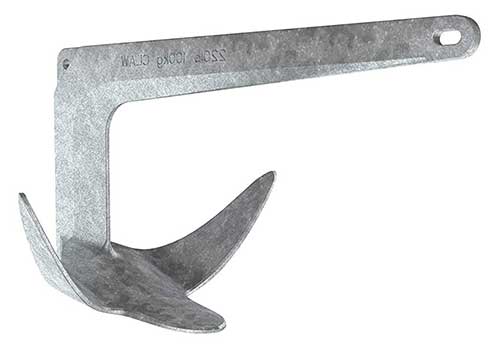
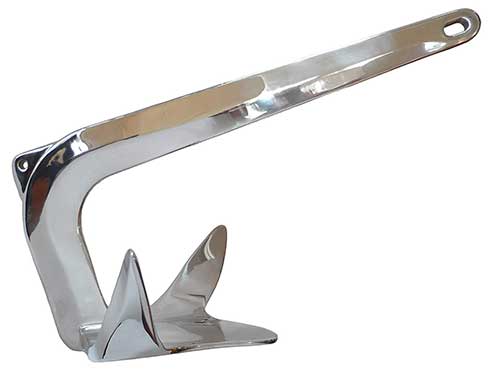
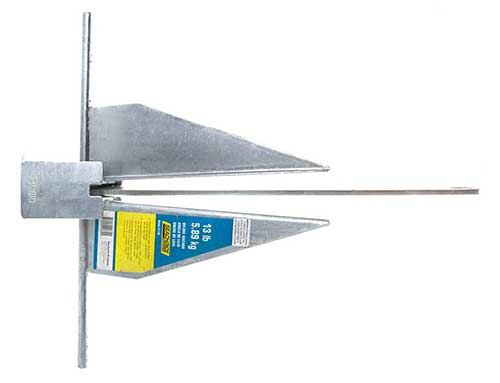
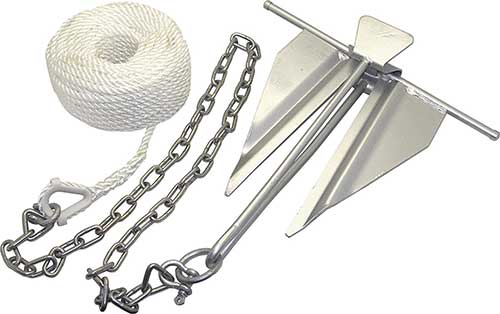
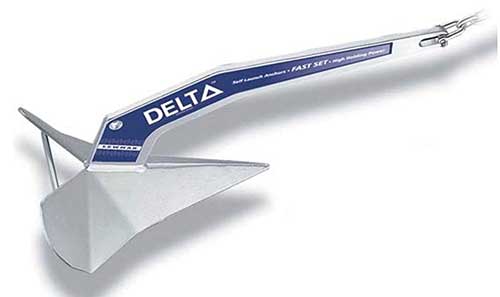
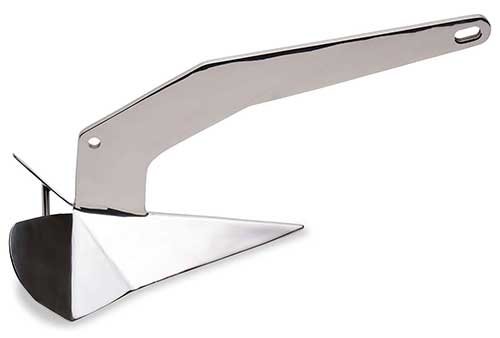
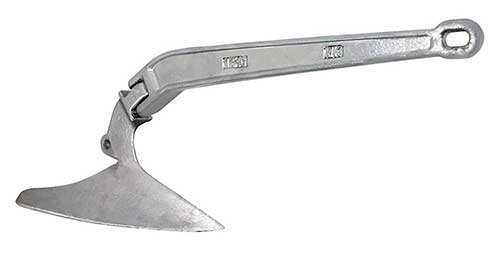
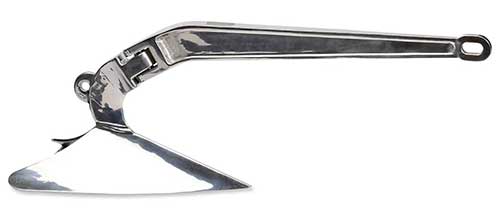
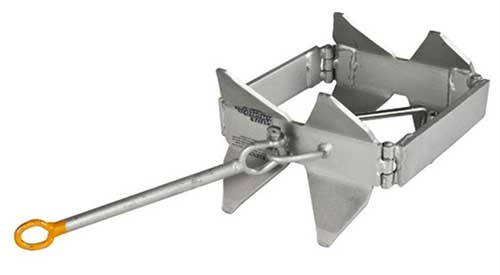
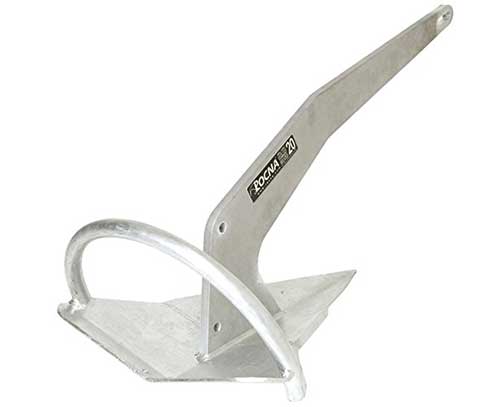
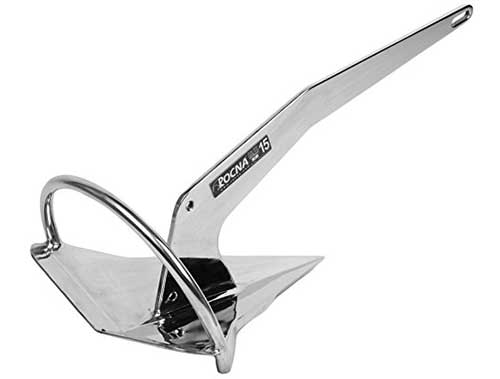
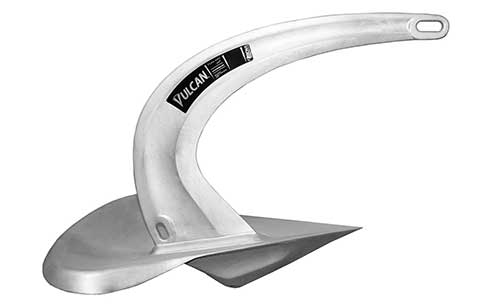
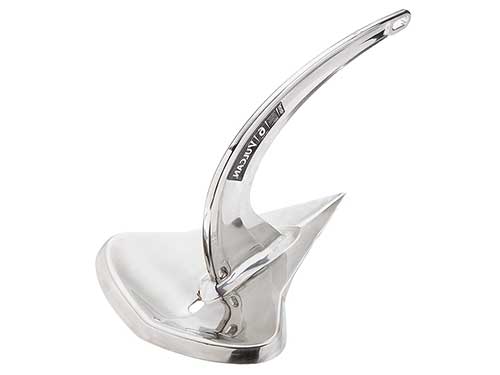
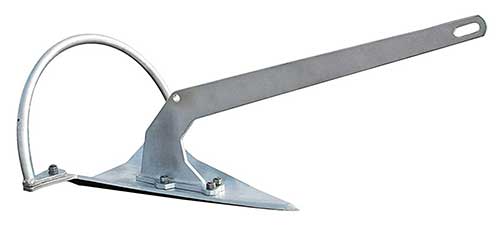
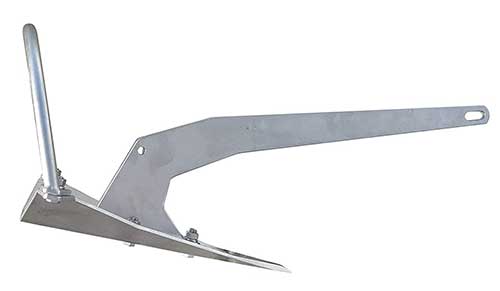
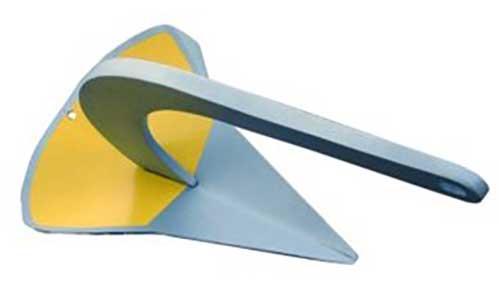
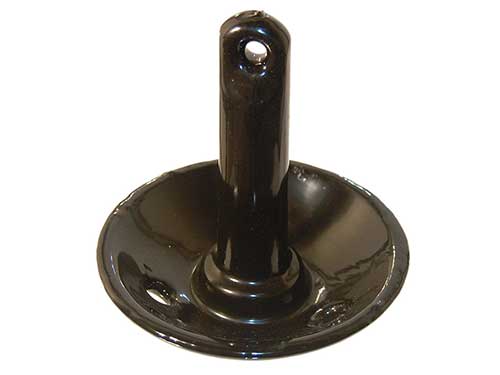
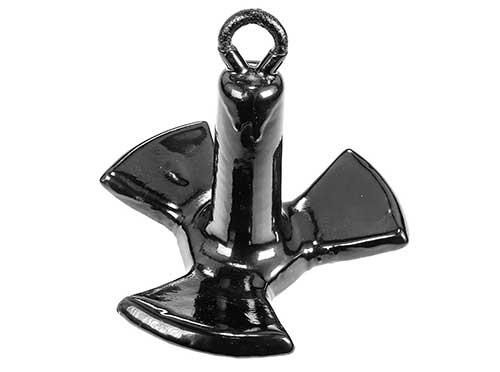
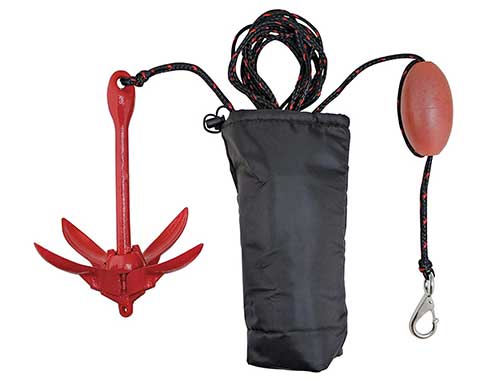
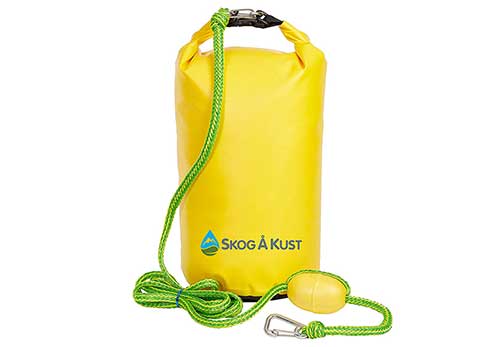
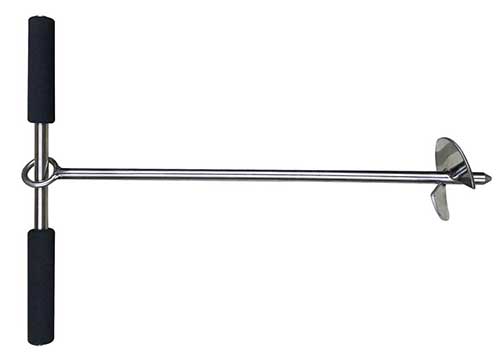

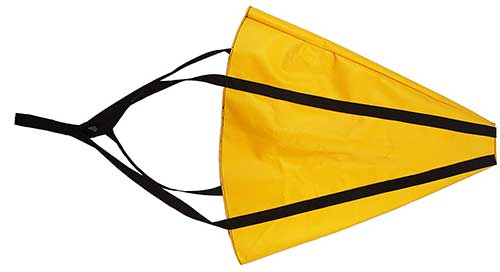
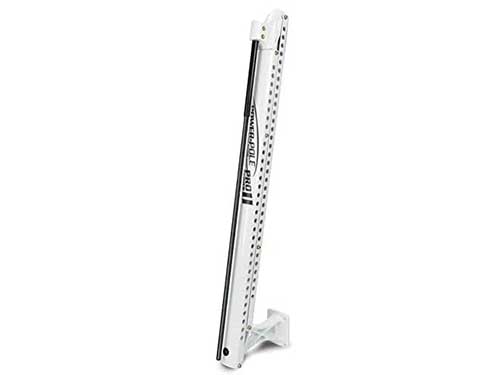
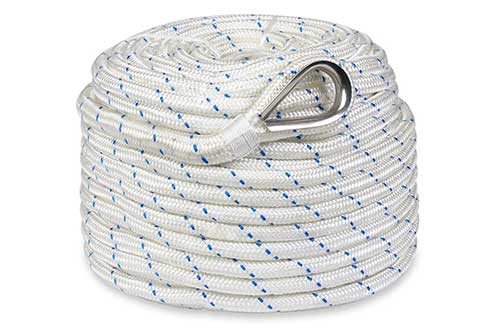
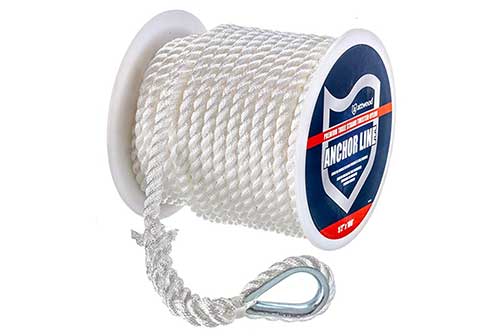
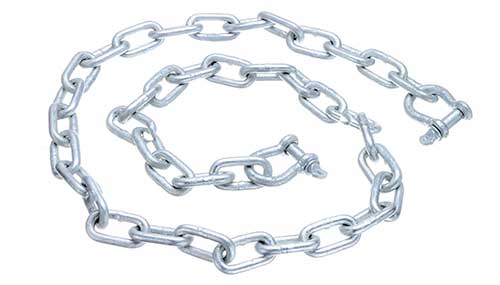
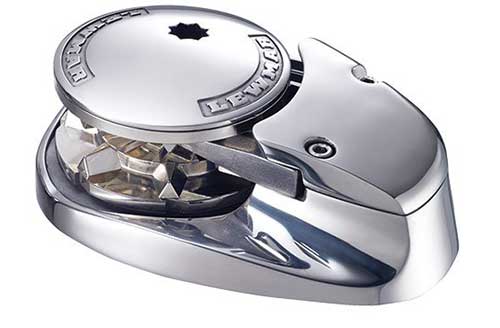
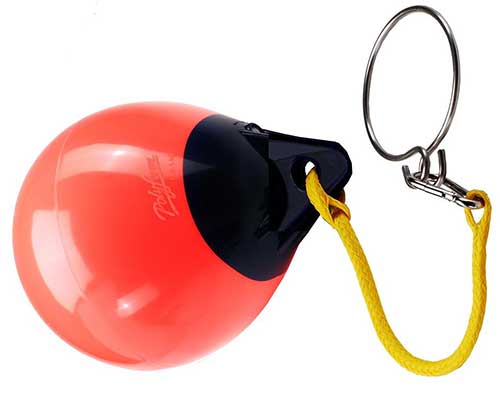
What size buoy do you use?
I use the size A3 anchor ball to retrieve the anchor for a 32-foot boat. This is a good size to receive anchors from 15-30 pounds even when lots of chains being used. For smaller anchors, a smaller ball can be used.
Great review. I must say that I like all of those mentioned above, I’m finding anchor ropes your post is really useful for me. I have been thinking about Braided Nylon Anchor Rope but why isn’t this rope used for windlasses?
Glad you found the review helpful, you can use braided nylon with a windlass. Some people prefer 3-strand to make the splice connection. A fid is needed for braided nylon but it can be spliced as well.